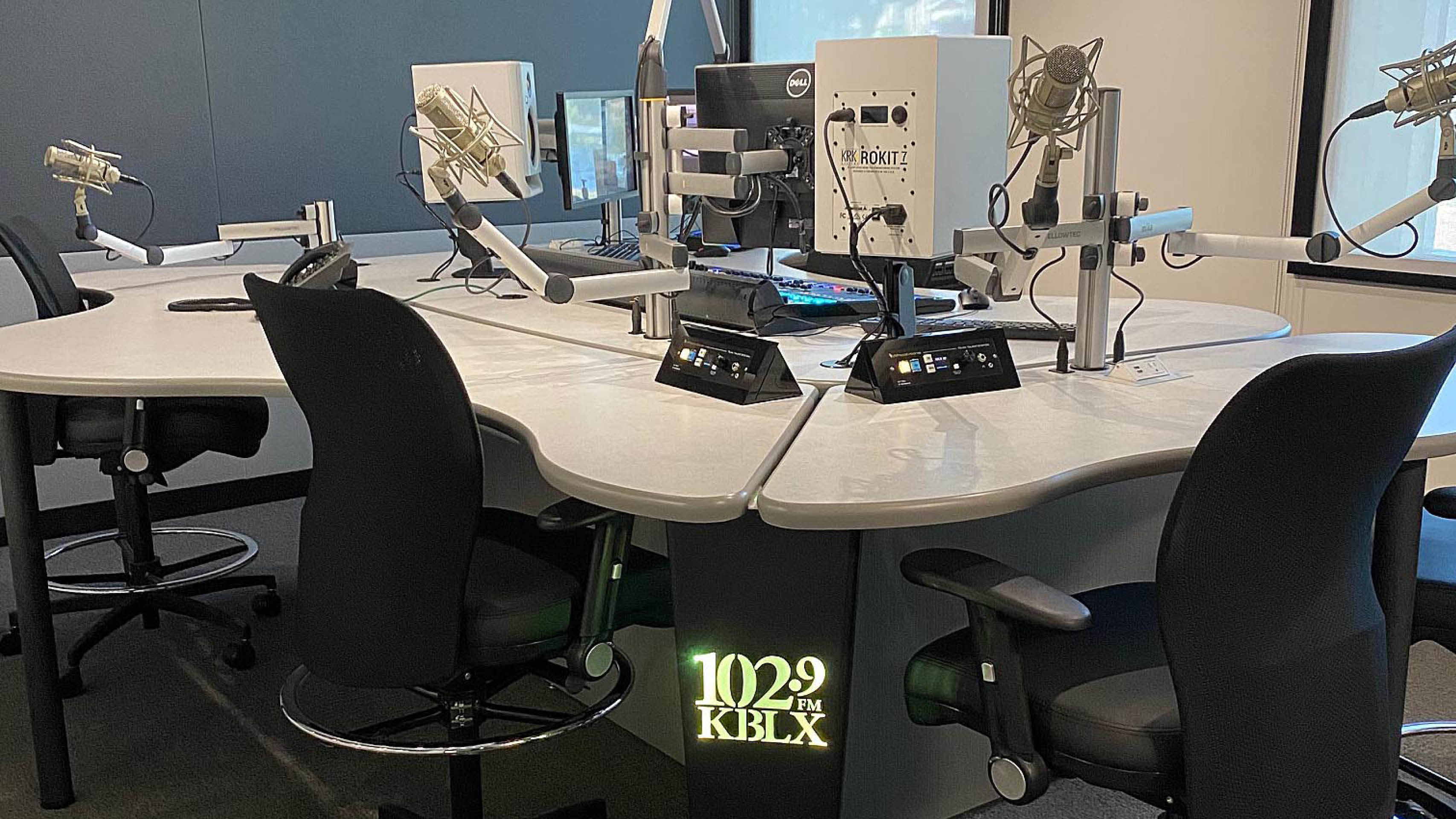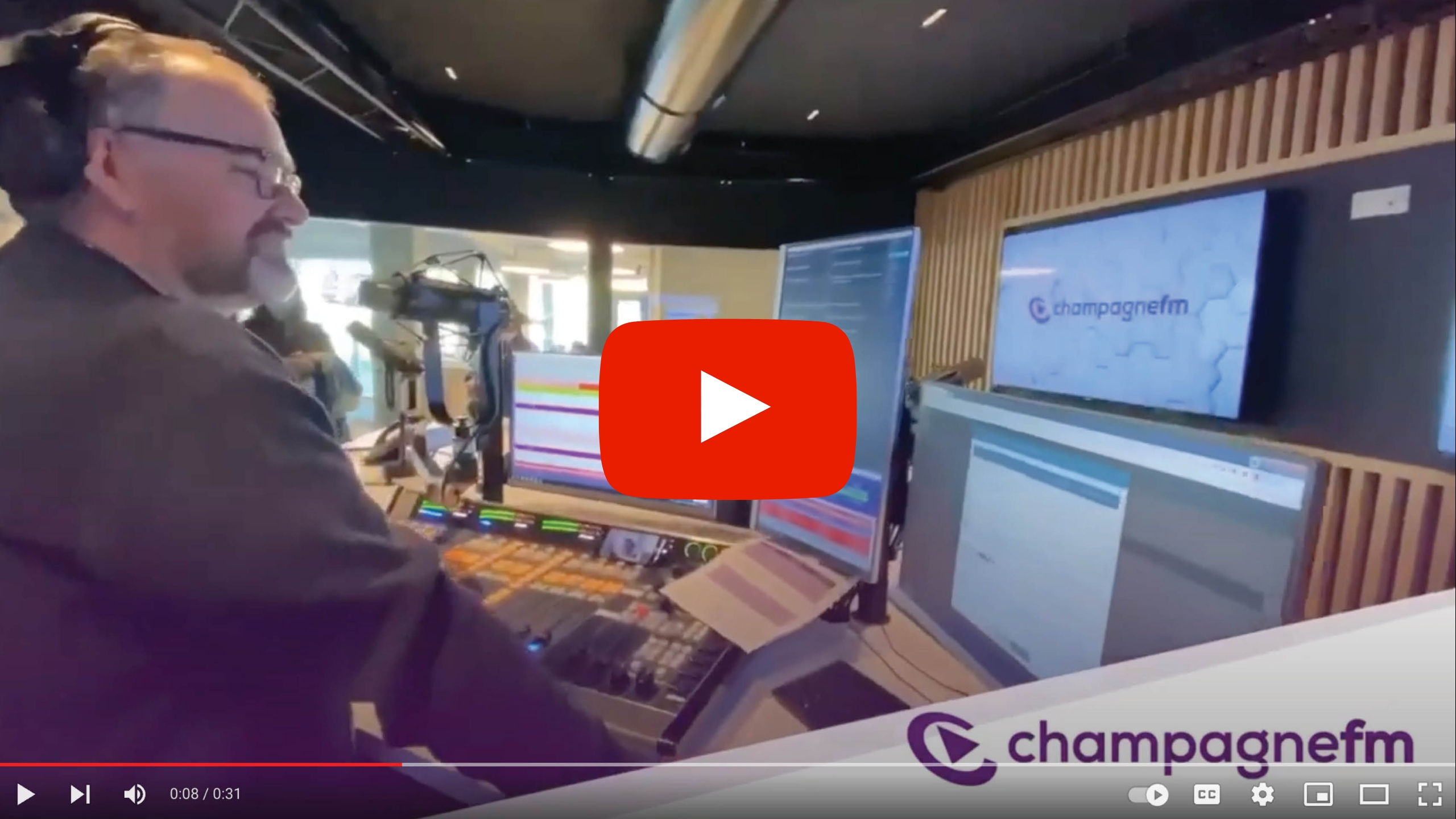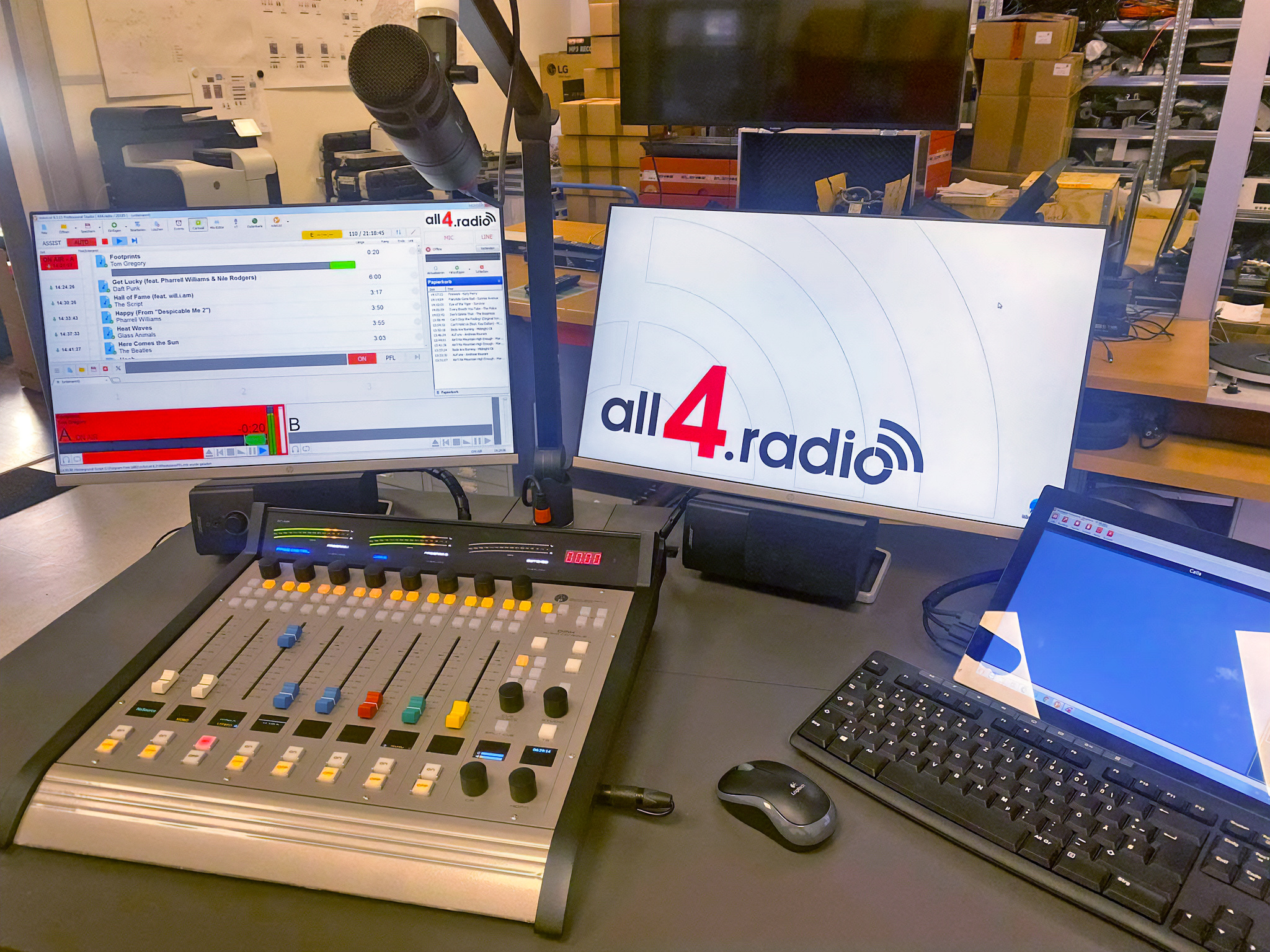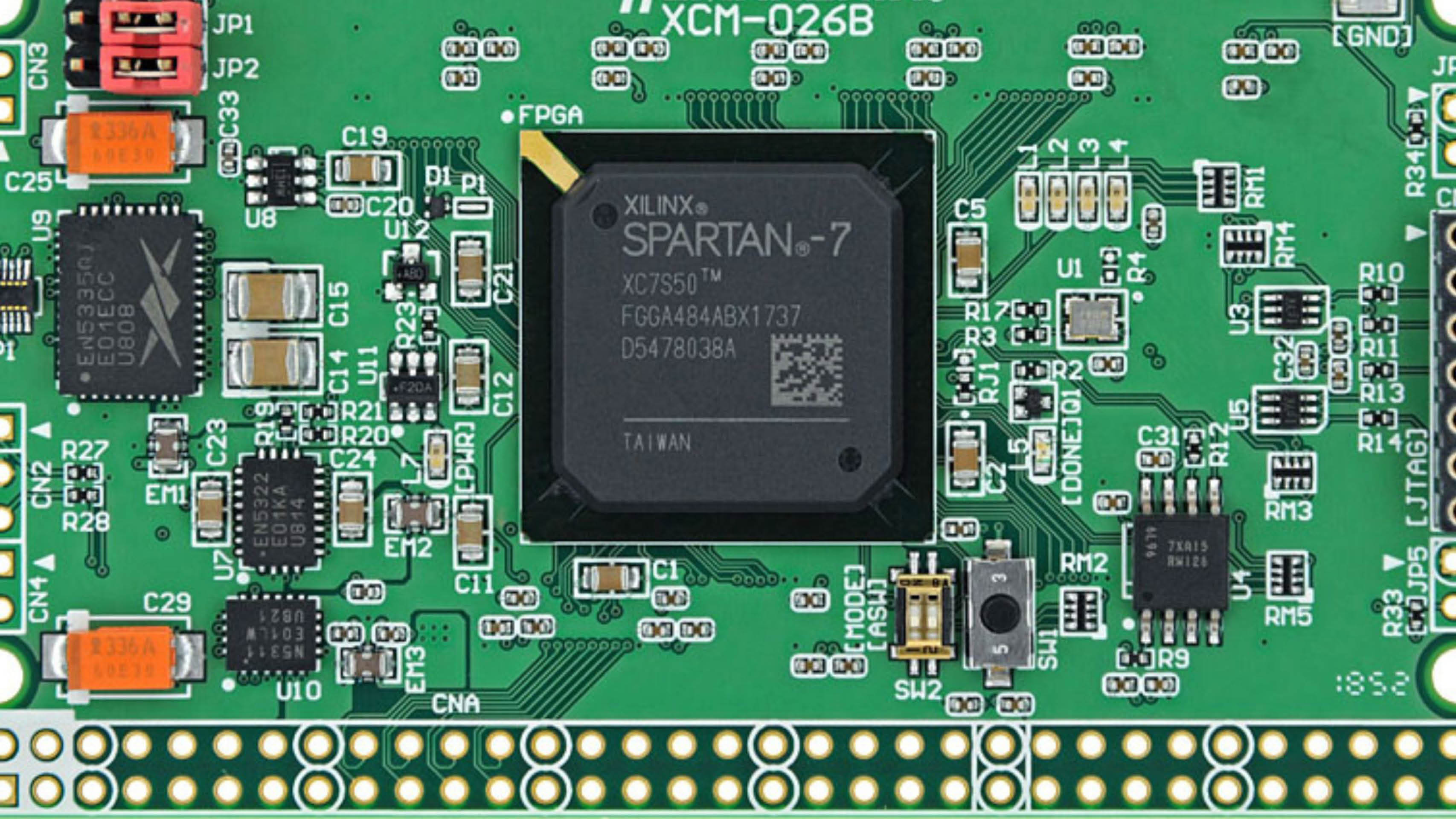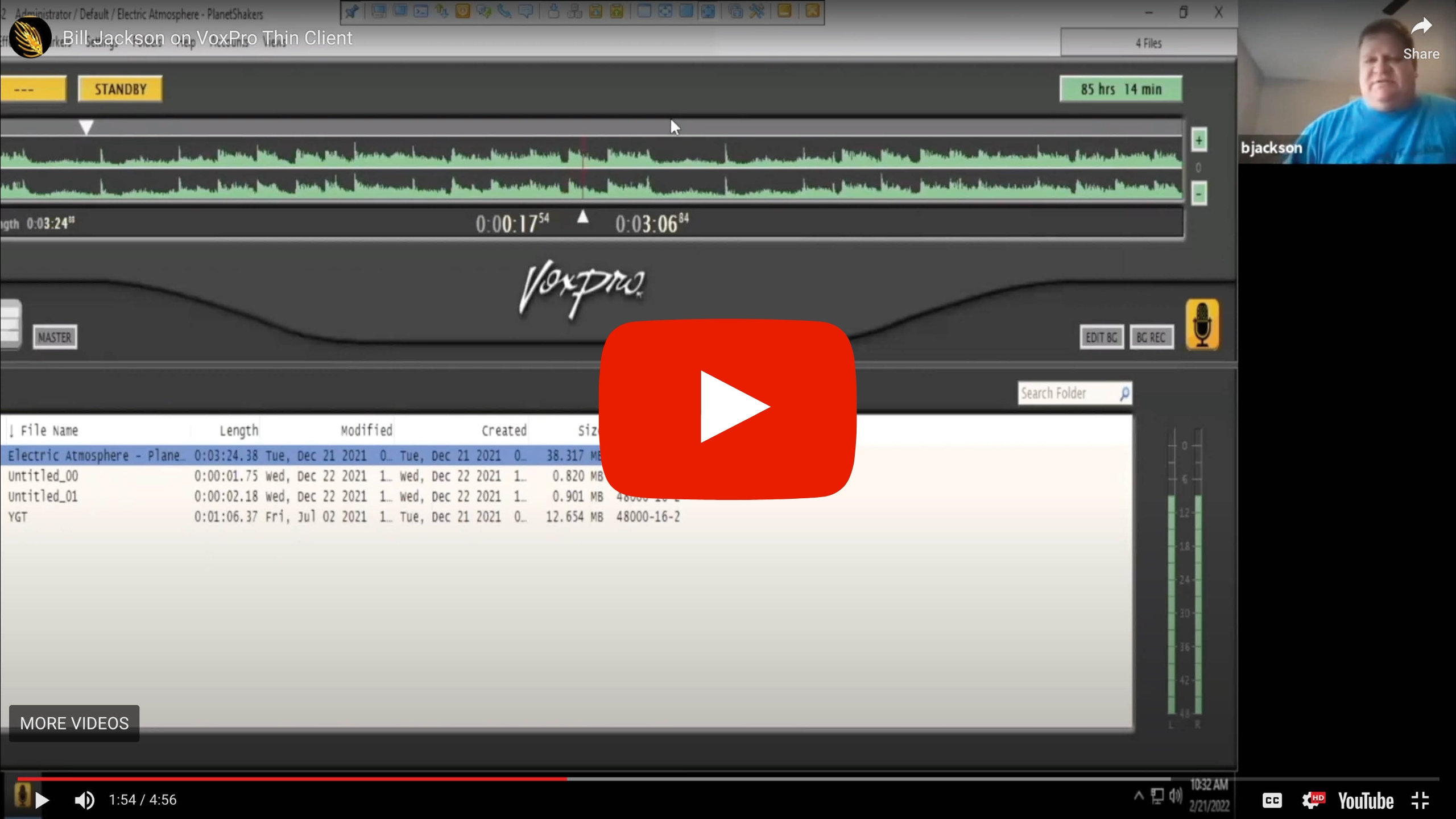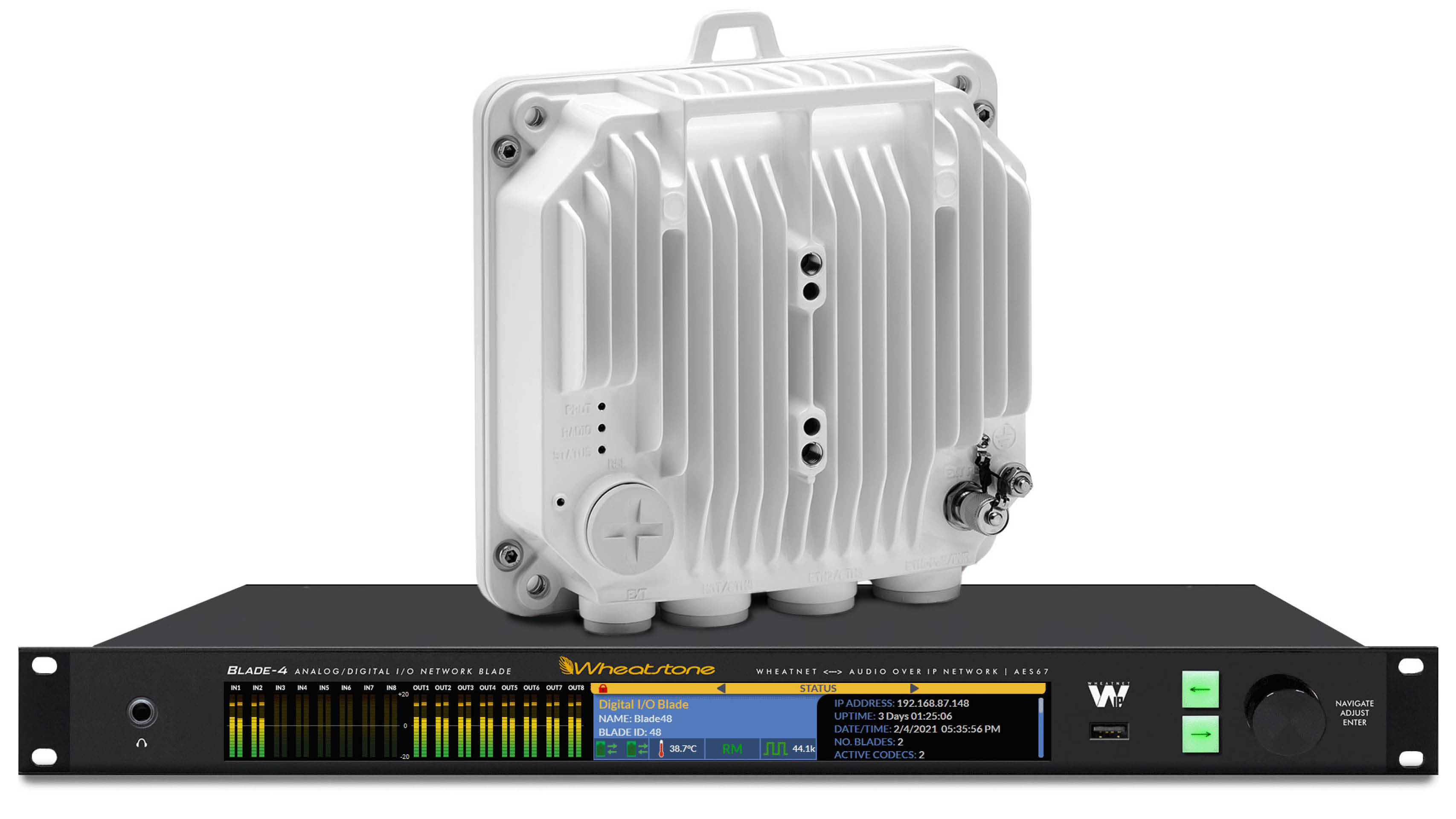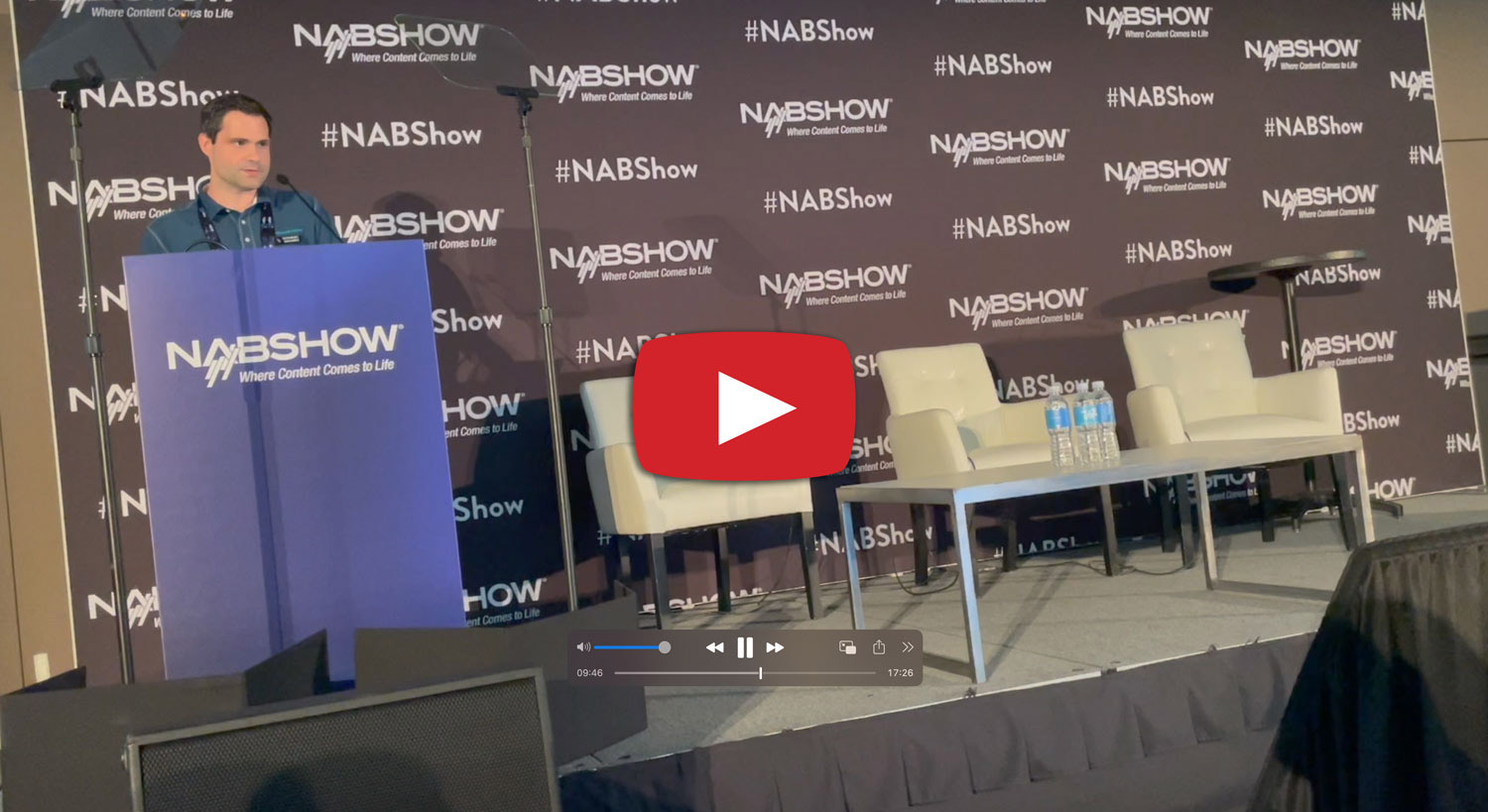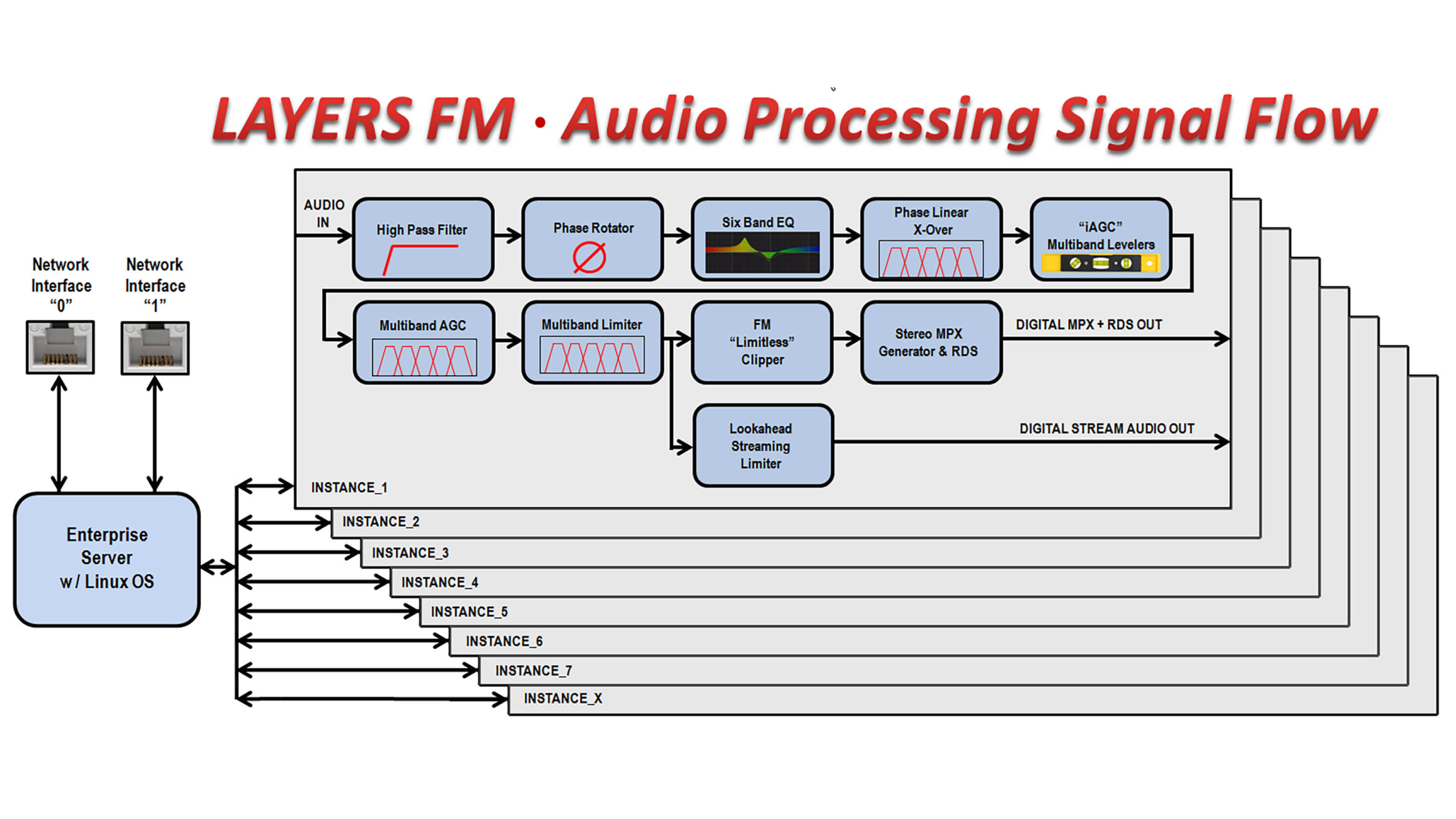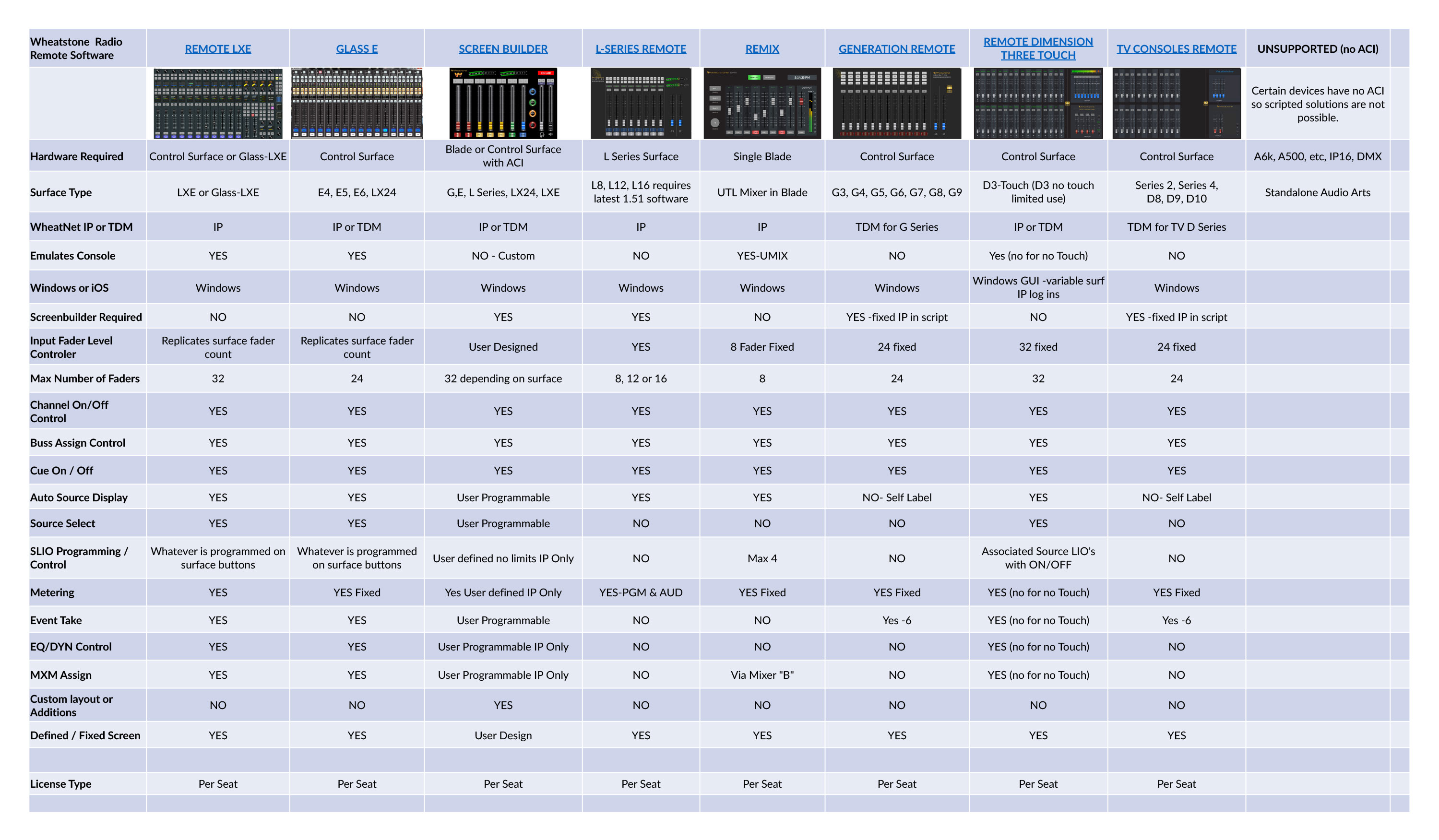WHEAT:NEWS JANUARY 2023 Volume 14, Number 1
BROADCASTING V.2023
More software, fewer engineers, better music (hopefully)
What we know about the coming year so far is that FTX bitcoin is out and OpenAI is in. We know that virtualization has reached the inner sanctum of broadcasting, that supply chain issues continue to cast a long shadow across our industry, and that the broadcast facility of the future most certainly will involve servers and possibly a data center or two. What follows are a few takeaways from 2022 as we look ahead to 2023, from studios getting smaller and AoIP stretching farther to what we learned about cloud from gamers. Read on.

STUDIO STANDARDIZATION TAKES OFF
The year saw studio standardization projects take off in a big way, many combining both glass surfaces for laptops and console surfaces for fixed studios shared across dozens of stations. Shown above, Bonneville San Francisco studios. Bonneville International owns 22 radio stations in Seattle, Phoenix, Denver, Sacramento, San Francisco and Salt Lake City, all standardized or in the process of being standardized on WheatNet-IP audio networked studios.
 From left to right, Aaron Farnham, Regional Director of Engineering for Bonneville, and Robert Fields, CE for Bonneville Phoenix, during a recent visit to the Wheatstone factory where complete studio systems were manufactured, configured and staged before shipping to Bonneville sites.
From left to right, Aaron Farnham, Regional Director of Engineering for Bonneville, and Robert Fields, CE for Bonneville Phoenix, during a recent visit to the Wheatstone factory where complete studio systems were manufactured, configured and staged before shipping to Bonneville sites.
MEANWHILE, THIS HAPPENED. A LOT.
It took a lot of these components (above) and some circuit boards, precision machining, and so much more to come together in our New Bern factory to make studio magic happen once again in 2022. Wheatstone completed a record number of studio projects in 2022, including studio standardization projects for the top broadcast groups in the U.S. and around the globe. We start Wheatstone v.2023 with a new cloud-ready broadcast software suite, new additions to our R&D engineering team, the latest in manufacturing equipment, and double the component inventory the previous year.
This is what it's all about. Champagne FM's new studios in Reims, France.
RESTLESS STUDIO SYNDROME
In yet another example of Restless Studio Syndrome, this studio fits into two flight cases and is ready to go in 10 minutes. Included is a self-contained DMX 8 console, an Aura8-IP for mic processing, a Tieline Genie codec, a playout system (mAirList) and a SIP-IP phone (Studiophone by Micromedia), all connected via WheatNet-IP. The studio is rented out by all4radio.com when not in use by RTV, Austria, a WheatNet-IP shop.
THE LATE, GREAT BROADCAST ENGINEER
The year 2022 saw broadcast engineers disappearing faster than redwood trees and giant pandas, leaving systems integrators and broadcast manufacturers such as Wheatstone to fill different roles at different times in the life of a facility. Wheatstone sales and systems engineers have been busier than ever creating new studio spaces for stations large and small, from initial planning and manufacturing to final commissioning and everything in between. (More on this subject at Broadcast Engineers Are Disappearing and Engineering Shortage Part II).
THE ART OF THE HACK
The best AoIP hacks continue to come from the field by Wheatstone customers. In FaceTiming and Other AoIP Hacks, Scott Fybush of WDKX-FM explains the art and science of FaceTiming into the WheatNet-IP audio network for remote teams that need a back channel or quick audio feed.
NEW TWISTS IN THE SUPPLY CHAIN
This little slice of silicon is the latest in FPGAs and is a good example of how supply chain issues continue to cast a long shadow across our industry. Spartan-7, shown here, became the go-to FPGA when the popular Spartan-6 neared end-of-life and became harder to get … which then led to impossible lead times on Spartan-7 FPGAs. We happened to have this one and several of its friends in inventory because our engineering and development team had updated from Spartan-6 to Spartan-7 FPGAs during the development of our new Blade 4—long before this recent supply chain interruption reared its ugly head. (Read The Latest Twist in the Supply Chain.)
…AND SO DOES LAYERS SOFTWARE SUITE
It finally happened, after years of anticipation and speculation. The industry’s first all-software broadcast suite for streaming, mixing and FM/HD audio processing arrived in April. We call it Layers Software Suite, which runs on any server in your rack room or off-site at an AWS or other cloud extension of the WheatNet-IP audio network. Spin up or down mixing, FM/HD processing and streaming instances when needed, your server or Amazon’s servers. With Layers, broadcasters are now able to extend studio failover redundancy across multiple AWS or Google cloud data centers, centralize stream provisioning and processing, and replace racks of gear along with the associated engineering, maintenance, and real estate costs.
WHEN VOXPRO MET VMWARE
Virtualization officially touched the inner sanctum of broadcasting when VoxPro met VMWare as part of an experiment at K-LOVE and Air1 last year. In this Zoom interview, Principal Studio Engineer Bill Jackson discusses how he centralized VoxPro audio recording and editing functions across the network using VMWare and thin client.
LINEAR AUDIO GOES ALL THE WAY
Highly compressed audio is so 1990s. These days, it’s linear audio all the way for broadcast groups like Crawford in Chicago, which extended its WheatNet-IP studio to its transmitter site in Lansing, Illinois, using a Cambium 18GHz link. 1Gbps Ethernet links such as this, as well as high-speed fiber, 5G and satellite services, are doing away with the highly compressed pipeline for transporting audio from point A to point B (for more information, click on Linear All the Way for Crawford Chicago).
SERVERS AS GATEWAY TO CLOUD
The great migration to cloud has begun in earnest, starting with on-premise “cloud” servers in the station rack room. Our Engineering Manager Dominic Giambo spoke at the April NAB Broadcast Engineering and Technology (BEIT) conference about on-premises servers and other practical migration paths (click on his article and video here: Servers as the Gateway to Cloud). One Dell or Hewlett Packard server can run multiple Layers mixing instances for several consoles located throughout the studio facility, plus serve Layers FM/HD audio processing with full MPX out to the transmitter as well as provisioning and metadata for multiple streams out to the CDN provider.
ATSC 3.0 SIX YEARS LATER
ATSC 3.0 is still going strong at Capitol Broadcasting Company in Raleigh, N.C., a long-time Wheatstone AoIP shop that began running an ATSC 3.0 channel under experimental license a little over six years ago. (First U.S. Experimental ATSC 3.0 License, Six Years Later.) We start the New Year with at least 68 U.S. markets broadcasting with ATSC 3.0 and 70+ NextGen TV set models available.
AUDIO PROCESSING WEATHER REPORT: PARTLY CLOUDY
We’re just beginning to realize the benefits of centralizing audio processing on-premise in a server or, in some cases, offsite at cloud data centers. One benefit of our new Layers FM/HD audio processor, according to our Jeff Keith (Audio Processing Weather Report: Partly Cloudy), is that processing as an instance on a server lets us apply competitive techniques that we might not have had the DSP cycles for in a hardware unit.
WHAT WE LEARNED ABOUT CLOUD FROM GAMERS
If gamers can play video games through Amazon data centers without an Xbox unit and not experience noticeable delays − and we’re told they can − what does that mean for the rest of us? It could mean that live mixing in an Amazon data center near your studios is possible − and becoming more possible as AWS and other data centers continue to crop up in major metro areas. Add high-speed services like Starlink and 5G, and full 192 kHz MPX out to the transmitter becomes much more practical. There will always be tradeoffs with latency and buffering for packet loss, something we’re very familiar with as an AoIP manufacturer, but the next year could very well give us better tradeoff options and free up studio space, engineering, and workflows like we’ve never experienced before. Stay tuned.
The Wheatstone online store is now open! You can purchase demo units, spare cards, subassemblies, modules and other discontinued or out-of-production components for Wheatstone, Audioarts, and VoxPro products online, or call Wheatstone customer support at 252-638-7000 or contact the Wheatstone technical support team online as usual.
The store is another convenience at wheatstone.com, where you can access product manuals, white papers and tutorials as well as technical and discussion forums such as its AoIP Scripters Forum.
Compare All of Wheatstone's Remote Solutions
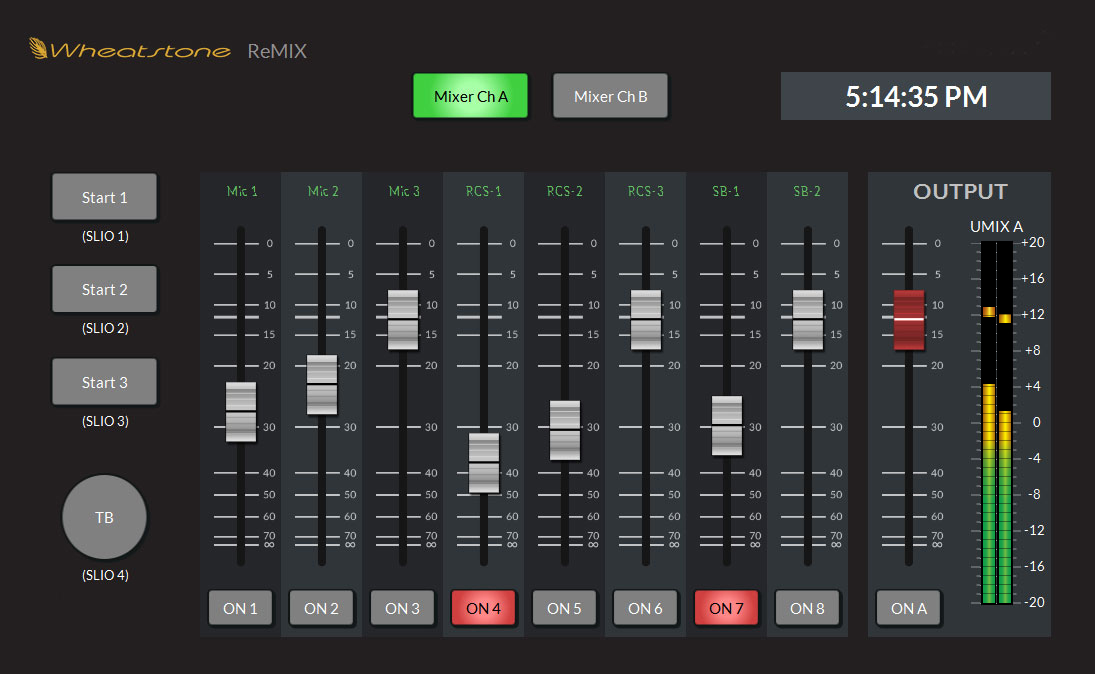 We've got remote solutions for virtually every networkable console we've built in the last 20 years or so. For basic volume, on/off, bus assign, logic, it's as easy as running an app either locally with a good VPN, or back at the studio, using a remote-access app such as Teambuilder to run.
We've got remote solutions for virtually every networkable console we've built in the last 20 years or so. For basic volume, on/off, bus assign, logic, it's as easy as running an app either locally with a good VPN, or back at the studio, using a remote-access app such as Teambuilder to run.
Check out the chart below, and/or click here to learn more on our Remote Solutions web page.
Remote Solutions Video Demonstrations
Watch Jay Tyler's video series demonstrating the various solutions Wheatstone offers for remote broadcasting.
Check out the chart below, and/or click here to learn more on our Remote Solutions web page.
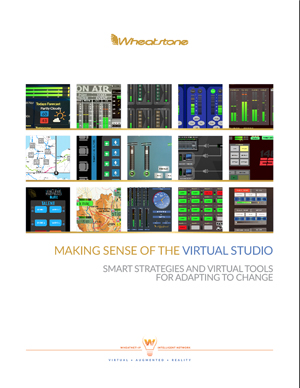 Making Sense of the Virtual Studio
Making Sense of the Virtual Studio
SMART STRATEGIES AND VIRTUAL TOOLS FOR ADAPTING TO CHANGE
Curious about how the modern studio has evolved in an IP world? Virtualization of the studio is WAY more than tossing a control surface on a touch screen. With today's tools, you can virtualize control over almost ANYTHING you want to do with your audio network. This free e-book illustrates what real-world engineers and radio studios are doing. Pretty amazing stuff.
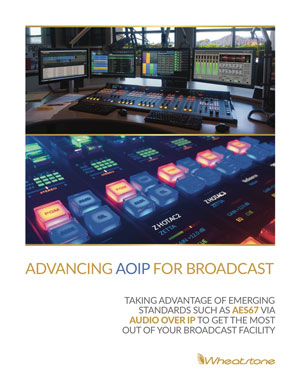 Advancing AOIP for Broadcast
Advancing AOIP for Broadcast
TAKING ADVANTAGE OF EMERGING STANDARDS SUCH AS AES67 VIA AUDIO OVER IP TO GET THE MOST OUT OF YOUR BROADCAST FACILITY
Putting together a new studio? Updating an existing studio? We've put together this e-book with fresh info and some of the articles that we've authored for our website, white papers, and news that dives into some of the cool stuff you can do with a modern AoIP network like Wheatstone's WheatNet-IP.
 IP Audio for TV Production and Beyond
IP Audio for TV Production and Beyond
WHAT YOU NEED TO KNOW ABOUT MANAGING MORE CHANNELS, MORE MIXES, AND MORE REMOTE VENUES
For this FREE e-book download, we've put together this e-book with fresh info and some of the articles that we've authored for our website, white papers, and news that dives into some of the cool stuff you can do with a modern AoIP network like Wheatstone's WheatNet-IP.
Feedback or questions? Click my name below to send an e-mail.

